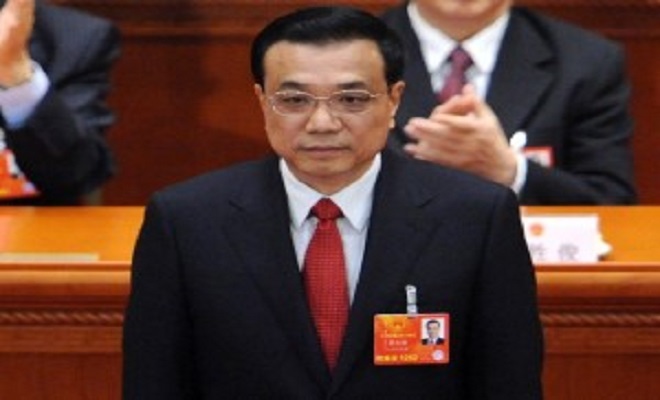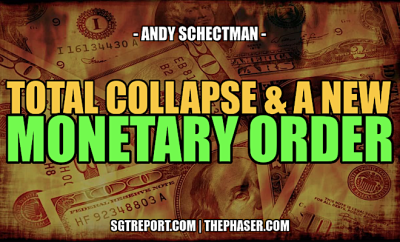 NEO.org
NEO.org
Economy
China’s Slowdown, Harbinger of a New Business Model?
by Nile Bowie, via NEO.org:
At the opening of China’s annual parliamentary meeting last week, Premier Li Keqiang laid out Beijing’s policy agenda for the year, speaking frankly about the formidable challenges to growth facing the Chinese economy. Li referred to a myriad of systemic, institutional, and structural problems as ‘tigers in the road,’ responsible for holding up development.
Beijing subsequently unveiled this year’s GDP target at about 7 per cent, the lowest target in over 15 years. After three decades of rapid expansion, Li has referred the current period of slower, sustained economic growth as the ‘new normal’. Though the revised performance target remains robust by global comparison, the Chinese leadership is now taking measures to offset further downward pressure on the economy.
Deflationary Risks
The slowdown in the world’s second largest economy is driven primarily by high debts (estimated at more than 280 per cent of GDP), an unintended consequence of the central government’s massive credit stimulus following the global financial crisis of 2008 to 2009. Following the crash, investments in property and infrastructure were financed primarily by credit to compensate for lower consumer demand for Chinese exports.
Declining commodity and oil prices, lower international and domestic demand, and falling industrial production have converged, placing an increasingly heavy debt burden on provincial governments and industrial firms. China is currently experiencing a property downturn and low consumer inflation, while three consecutive years of contracting industrial output has spurred on deflationary risks.
China’s central bank has recently announced the reduction of interest rates for the second time in three months, reducing lending and deposit rates by a quarter percentage point. Beijing has been skeptical of monetary easing policies that would further reckless borrowing and increase the debt burden. The Chinese leadership are now easing borrowing costs, albeit very cautiously and by conservative margins.
Interest rate reductions are being made primarily to manage corporate debt levels, easing financing costs with the ultimate aim of preventing the build up of non-performing loans, which could trigger a hard landing for the Chinese economy that would have severe global reverberations. Lower borrowing costs are also intended to aid exporters and home buyers.
Changing the Business Model
China’s development strategy of export-led growth supported by low-cost manufactured exports, undervalued exchange rates and investment in heavy industry is increasingly viewed as being unsustainable in the face of huge environmental challenges, industrial overcapacity, rising labor costs, and high provincial government debt.
Beijing’s long-term reform objectives involve restructuring the economy around domestic consumption, tackling overcapacity issues, promoting services, and encouraging technological innovation to move manufacturing up the global value chain. During his parliamentary address, Li highlighted the government’s ambition to “upgrade China from a manufacturer of quantity to one of quality.”
The Chinese government has set job creation as a key objective, aiming to create 10 million new jobs this year, while pursuing measures to further reduce administrative interference to make it easier to start businesses. 7.49 million university graduates are set to enter the workforce this year, as the government has pledged to actively support business start-ups for new industries.
Leaders of China’s largest tech firms – Baidu, Alibaba, Tencent, Lenovo and Xiaomi – were present at the annual parliamentary session. Beijing laid out plans for promoting e-commerce development and the international expansion of Chinese internet companies and tech firms, pledging greater state investment in the internet sector and emerging technologies.
Domestic tech firms and internet-based start-ups are viewed as one of the future engines of economic growth, capable of creating tens of millions of jobs while Beijing scales back severe pollutant industries, such as coal mining. China boasts over 780 million broadband internet users, more than the populations in the euro-zone and US combined, which makes the internet sector a powerful driver in promoting the kind of consumption-led growth that Chinese leaders have been calling for.
Consumption-Led Growth
China’s economic slowdown presents various obstacles, but also opportunities for the firm implementation of changes that will place emphasis on more equal income distribution to stimulate demand and less damaging forms of development. The main economic challenges ahead consist of maintaining healthy growth targets without resorting to a credit-fuelled surge in borrowing.
Moreover, the gradual appreciation of the renminbi is key to promoting consumption, although the deflationary pressure on the economy has suppressed the currency. Beijing plans to allow more private investment in state-owned enterprises while it liberalizes the financial sector to compensate for decreasing investment and industrial activity.
Shanghai’s 28 square kilometer free-trade zone has been the policy-testing ground for Beijing to experiment with open capital markets in the interest of internationalizing the renminbi, which China has – very cautiously – begun steering toward becoming a globally dominant, fully-convertible currency.
A liberalized capital market is seen by Chinese leaders as a means of accelerating rebalancing reforms, increasing consumption, and forcing low-end domestic exporters to move up the value chain. Integration into global capital markets demands that the renminbi move toward a more freely floating exchange rate as it is utilized as an international trade settlement currency.
In more human terms, the biggest obstacle of consumption taking over as a growth driver is income inequality and the weak position of labor in society. China’s Gini co-efficient figure, which measures the income inequality within an economy, rose to 0.73 last year, representing severe income inequality. A report by Peking University also found that while poverty has decreased substantially, the poorest quarter of Chinese citizens owned only 1 per cent of the country’s wealth.
Beijing recently unveiled plans to lift government spending to 17.15 trillion yuan ($2.74 trillion) in 2015, a 10.6 percent increase from 2014 levels. The budget deficit for 2015 represents 2.3 per cent of GDP, but there are indications that the real figure may be higher than declared, effectively putting this year’s spending at 2.7 percent of GDP, on par with the 2009 stimulus package.
To drive consumption forward, more resources should be directed toward pensions, healthcare, unemployment and support for a national minimum wage standard. Additionally, tax cuts on low-income earners and small and medium sized enterprises should be implemented to relieve the burden on households and boost spending on consumption.
If the 2015 budget is effectively on par with the post-crisis stimulus budget, the focus this time around should proportionately place emphasis on debt management and spurring demand through consumption, rather than further credit-fuelled investments that would add to the debt burden.

















